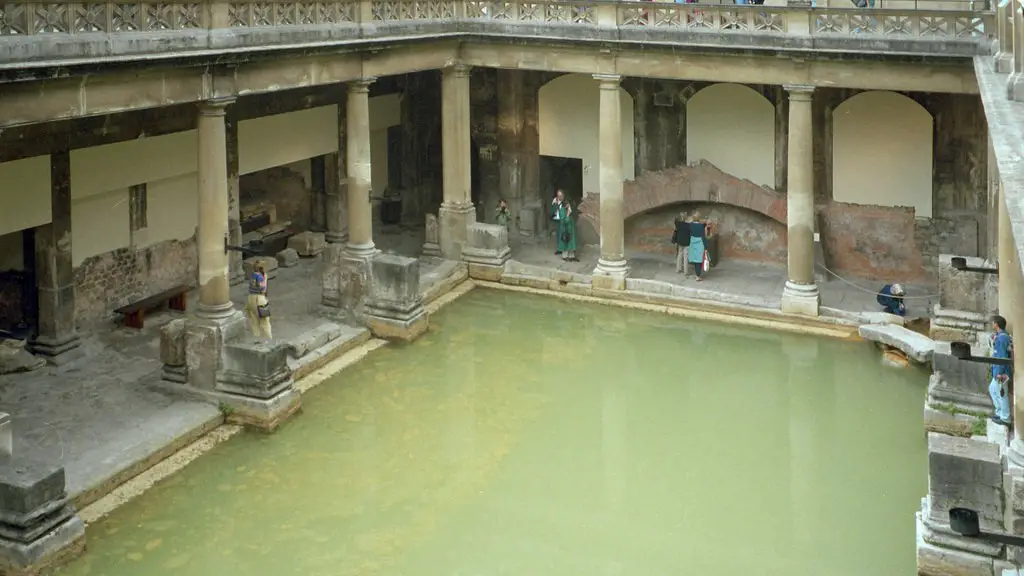Alcohol Percentage in Wine in Ancient Rome
Ancient Roman society enjoyed consuming wine as a regular feature of their everyday lives, whether it was during meals or accommodating visitors. Drinking was so embedded in their culture, only those considered Roma’s moral outcasts abstained.
Not much is known about the makeup of their wines, as the vast majority of wines in Ancient Rome were produced locally, but there is evidence to suggest that the alcohol content of their wines was considerably greater than modern-day wines.
Researchers have proposed several theories for the higher alcohol content. For one, the addition of fruit or honey to the wine was a popular means of sweetening it, thus increasing its ethanol content. Another plausible explanation is that pressing the grapes into a concentrated must must used far more skins and seeds than is typical in wine production today.
Experts agree that the most significant contributing factor to higher alcohol content was the use of unbaked amphorae for aging and transport. Amphorae were used for centuries to store and age wine, much like modern-day barrels, but the process rendered them often porous and unable to contain the gas produced by fermentation. The result was a partial evaporation of the water and thus a higher alcohol content in the finished product.
The frequency and abundance of drinking in Ancient Rome was unmatched in other societies. In contrast to Modern day Americans, who due to fear of arrest, typically reserve drinking to certain social functions, Ancient Romans drank wine at a much wider variety of informal gatherings like shops, marketplaces, and even the baths.
Wine was regarded by the Roman elite as an essential part of the daily diet and a health benefit. Doctors’ potion prescriptions often called for wine to treat a wide array of ailments. It was not just consumed as an alcoholic beverage; wine was also used to prepare dishes, or as an ingredient in sauces. These additions would have allowed the chefs to not only enhance the flavor of meals but also add a layer of complexity by deepening or lightening the flavors.
Average Alcohol Content of Wine in Ancient Rome
Though exact percentages of alcohol content vary greatly, depending on the circumstances and the producer, many researchers believe wine from Ancient Rome had an alcohol content closer to 14-20%, far higher than our current understanding of the average alcohol content for wine.
The average alcohol content of wine in Ancient Rome could vary from a sweet quarta—a low-alcohol content beverage typically available to slaves and craftsman—to honey-fortified wines which may have had an alcohol content of 14 % or higher.
Despite what we now consider as an uncharacteristically large amount of alcohol, drinking heavily was not as frowned upon in Ancient Rome as it is today. Wine was synonymous with a healthy lifestyle and imbibing excessive amounts of liquor was not only tolerated, but even encouraged, as it was seen as a sign that you could, at least, afford it.
The actual alcohol content of wine in ancient Rome was largely a factor of the wealth of individual producers, wealthy Romans could follow trends and use quality ingredients, while poor Romans resorted to less expensive substitutes.
What Was Considered To Be High Alcohol Content In Ancient Rome?
While exact measurements are hard to verify, some researchers have suggested that wines aged and stored in amphorae had a reachable alcohol content of between 16-20%. Depending on how much was added to the wine and how much water the amphora was able to keep, these wines could reach up to 30% alcohol.
It should be noted that this estimation comes from literary examples and papyri—better sources from Ancient Rome are essentially non-existent as writing about wine-making had hardly developed at the time.
To get an idea of the amount of alcohol which was considered to be high-content in Ancient Rome, we can look to the Symposium, written by Plato, in which he speaks of a weak drinker being unable to handle a beverage which any healthy man could drink and with which you could become drunk.
Though no ancient recipes remain, it is widely accepted that the consumption of high-alcohol content wines would have been commonplace among Ancient Romans as it can still be found in some Mediterranean countries today.
Accessibility and Consumption of High-Alcohol Content Wine
The accessibility of high-alcohol content wine in Ancient Rome differed in accordance with a person’s social and financial standing. Someone of high rank, such as senators and more wealthy Romans, had access to high-alcohol content wines due to their financial means.
However, despite widespread availability, wine was very expensive in Ancient Rome and the lower classes, including miners and craftsmen, would not have had access to high-alcohol content wine because of the cost.
There is evidence, however, that some of the lower classes would eat dates and raisins that were submerged in wine for two weeks and then left to ferment in the sun, thus turning them into a homemade high-alcohol content beverage.
While Ancient Rome was lenient when it came to drinking excessive amounts of alcohol, it is believed that wealthy individuals would be wary of consuming higher alcohol content wines over a long period of time due to it being considered a threat to their mental stability.
Effects of High Alcohol Content Wine on Ancient Romans
The idea that drinking large quantities of high alcohol content wine could lead to mental instability or a lack of sobriety was prevalent in Ancient Rome—especially as they did not possess the technology to measure alcohol contents at the time.
Once it was discovered that the higher a wine’s alcohol content, the faster and more profound the effects, legislation began to emerge in various Roman provinces. This included laws that reduced the amount of days a person was permitted to drink a day and increased taxes on high-alcohol content wines.
The Roman philosopher Cato the Elder, amongst others, believed that drinking excessively left a person unreliable, prone to anger and sullied the reputation of those of high-social standings.
These laws would, most probably, have been welcomed by the upper classes of Ancient Rome who believed in an individual’s responsibility for their own behaviour and had an aversion for legal consequences. Various laws meant for the protection of cultivated races—i.e. the upper classes—were commonplace in Roman society.
Conclusion of High Alcohol Content Wine in Ancient Rome
It is hard to tell the exact alcohol content of wines in Ancient Rome, due to the lack of evidence from the time, and it is, thus, difficult to determine the effect the high alcohol content had on them. What we do know is that wine was an important part of their culture, and they went to great lengths to ensure they had the best ingredients and wine-making processes at their disposal.
We do know that the frequent consumption of wine in Ancient Rome was not seen as something detrimental to their health, though wealthy Roman elites may have been more cautious when it came to higher alcohol content wines.





